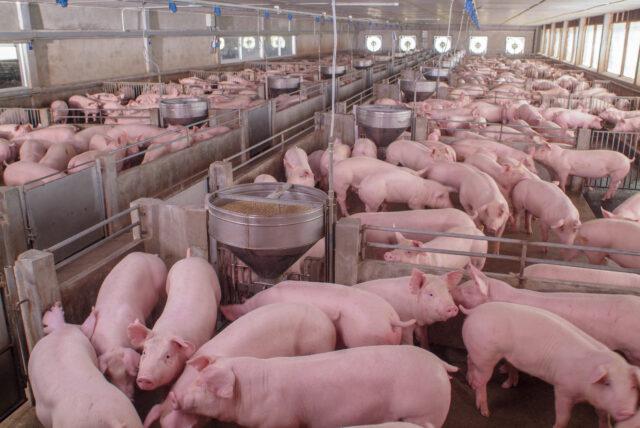Porto Alegre, November 19, 2021 – Brazilian exports of Brazilian pork in October were strong, in line with the monthly average registered over the year, reaching 96.930 thousand tons, according to data from COMEX STAT and compiled by SAFRAS & Mercado. However, two points deserve attention in the month’s result: the average price per ton and the volume sent to China.
The Chinese swine industry has been through a severe crisis as a result of the great advance in its production, which impacts the prices of the entire production chain. This scenario has led the Asian country to act with little force in the purchase of meat in the global market (including beef and pork). Chinese customs data released last week showed that the country imported 664,000 tons of meat in October, the lowest volume in the last 20 months. In the case of pork, the Chinese are reducing purchases from the United States, Canada, and the European Union, as can be seen in the attached table.
Brazil had not been impacted until September, but in October it coped with the second-worst shipment to China this year, reaching 37.353 thousand tons. It may be an isolated piece of data, but it is already a point of caution, and the data for the coming few months deserve attention. The positive point in October was volume, as Brazil shipped 8,393 thousand tons to Vietnam, up from 4,316 thousand tons in September. Another fact that is starting to draw attention is that the Philippines, which until then had imported negligible volumes from Brazil, is also increasing its purchases, which in October hit 4.418 thousand tons. Vietnam and the Philippines are far from China in the global market, but the fact that there is greater diversification is relevant.
The average price of a ton exported by Brazil was USD 2,218.18 in October, down 11.5% from the average in June (USD 2,506.39). The number is impacted by Chinese renegotiations over the past few months. Considering, the average price paid by China in the same period, there is an 18.32% decline to USD 2,233.96 in October against USD 2,735.07 registered in July (peak of the year). A decrease in prices means a smaller margin for exporters, which impacts business involving swine in the domestic market, that is, negotiations become harder, and the chance for consistent readjustments for livestock decreases, which brings some apprehension among swine farmers, since in several states profitability is impacted by the high cost of production. In any case, the flow even at lower prices is happening, which is important since the Brazilian market cannot absorb large increases in supply without a negative impact on prices.
When should China resume more aggressive purchases in the global market? The current situation of both national and global beef and pork leads us to understand that the Chinese are trying to push their domestic demand towards pork, thus being able to reduce their supply and send prices to levels that allow profitability and do not drastically compromise their future production. The hindrance to Brazilian beef as well as the lack of Chinese strength for reopening of purchases also lead to this understanding. The demand for pork in mainland China is already growing, favored by low prices and closer temperatures. It is worth noting that the peak of consumption in China tends to happen in the Lunar New Year, at the beginning of February 2022. So, the next three months tend to have limited imports. On the other hand, prices in the Chinese swine chain may find support in the period. China must assess the level of supply and other variables and return to purchases after the holiday, however, 2022 exports are unlikely to reach volumes close to those seen in 2020 and 2021.
Another point is that in the first quarter of the year the demand for pork in Brazil is historically shy, impacted by higher spending and indebtedness of households. Thus, together with cold exports, the price of meat and livestock tend to suffer in the period and keep margins depressed. The positive point is that the production cost tends to be a little lighter compared to this year.
SAFRAS Latam

